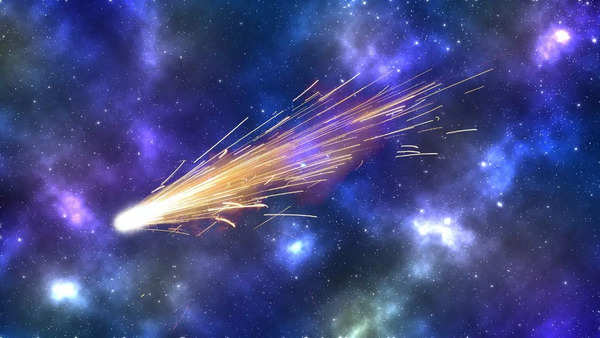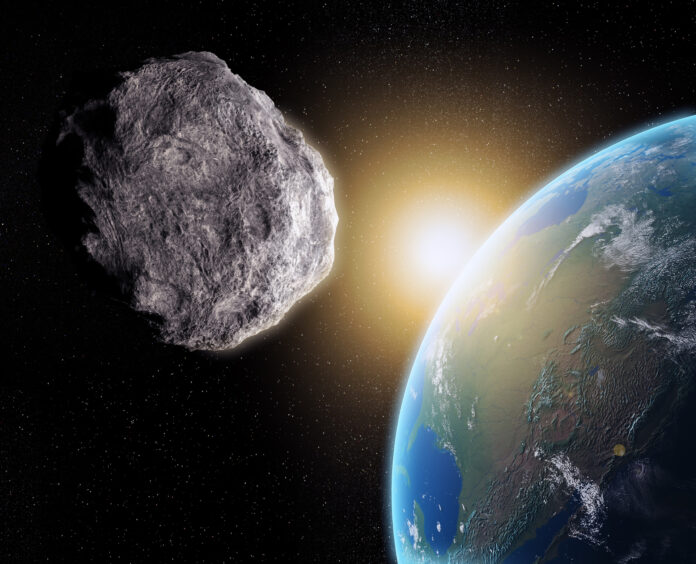A massive asteroid, equivalent in size to a sports stadium, is set to pass by Earth on November 26, offering astronomers and space enthusiasts a fascinating opportunity to observe one of nature’s celestial wonders. NASA has confirmed that Asteroid 2006 WB, measuring approximately 300 feet (100 meters) in diameter, will make its close approach on the eve of Thanksgiving.
The Path Of 2006 WB
Discovered by the Catalina Sky Survey in November 2006, this near-Earth object (NEO) will zoom past our planet at a distance of 554,000 miles—roughly twice the distance between Earth and the Moon. Traveling at an astonishing speed of 4.2 kilometers per second, or approximately 9,400 mph, the asteroid is expected to shine brightly with a magnitude of 13, enabling astronomers to gather critical data about its composition and behavior.
NASA’s Jet Propulsion Laboratory (JPL) has revealed that this close approach provides an ideal opportunity for astronomers to conduct light curve analysis and vis-IR spectroscopy, which will allow them to better understand the asteroid’s surface properties, rotation, and composition.
What Are Near-Earth Objects (NEOs)?
Asteroid 2006 WB is classified as a near-Earth object (NEO)—a category encompassing asteroids and comets that travel within 120 million miles (195 million kilometers) of the Sun, bringing them into Earth’s orbital neighborhood. Most NEOs are asteroids varying in size from small rocks just a few meters wide to massive bodies spanning up to 25 miles in diameter.
Although NEOs frequently pass by Earth, the majority do so at safe distances and pose no threat. However, NASA continues to monitor them closely for any potential risks.

Potentially Hazardous Asteroids
Within the NEO category lies a subset of objects known as potentially hazardous asteroids (PHAs), which demand heightened scrutiny. These asteroids are classified based on two criteria:
- Size: PHAs are typically larger than 460 feet (140 meters) in diameter.
- Orbit: They pass within 4.6 million miles (7.5 million kilometers) of Earth’s orbital path around the Sun.
While Asteroid 2006 WB is not categorized as a PHA, it remains an object of interest due to its significant size and relative proximity to Earth. NASA’s Center for Near-Earth Object Studies (CNEOS) plays a pivotal role in calculating the orbits of such objects and assessing their impact risks.
Additional Asteroids Passing By
Tomorrow’s cosmic event is part of a series of recent asteroid flybys. On November 25, NASA tracked the movement of two bus-sized asteroids, 2024 WF2 and 2024 WJ3, passing at safe distances of 1,780,000 miles and 2,780,000 miles, respectively. A larger asteroid, the plane-sized 2009 WB105, will fly past Earth at a distance of 3,600,000 mileslater today.
Adding to the excitement, another bus-sized asteroid, 2024 WD3, is expected to make its closest approach tomorrow, passing at about 1,080,000 miles from Earth. These flybys highlight the dynamic and ever-changing nature of our solar system.

The Importance Of Monitoring Asteroids
NASA’s continuous monitoring of near-Earth objects serves a dual purpose: to expand scientific understanding of these celestial bodies and to mitigate potential threats. Tracking asteroids like 2006 WB not only helps refine orbital calculations but also provides insights into their physical and chemical properties, which could prove invaluable for future planetary defense strategies.
A Celestial Spectacle
As Asteroid 2006 WB approaches Earth tomorrow, it serves as a reminder of the vastness and intricacy of our cosmic surroundings. While the asteroid poses no danger to our planet, its close approach underscores the importance of ongoing space research and observation.
For those equipped with telescopes, this flyby offers a rare chance to observe a piece of the universe’s history as it glides past Earth at breakneck speed. Meanwhile, astronomers eagerly await the data that will add another layer to our understanding of near-Earth objects.
The universe continues to surprise and fascinate, and tomorrow’s celestial visitor is just one of many marvels that remind us of our place in the cosmos.

